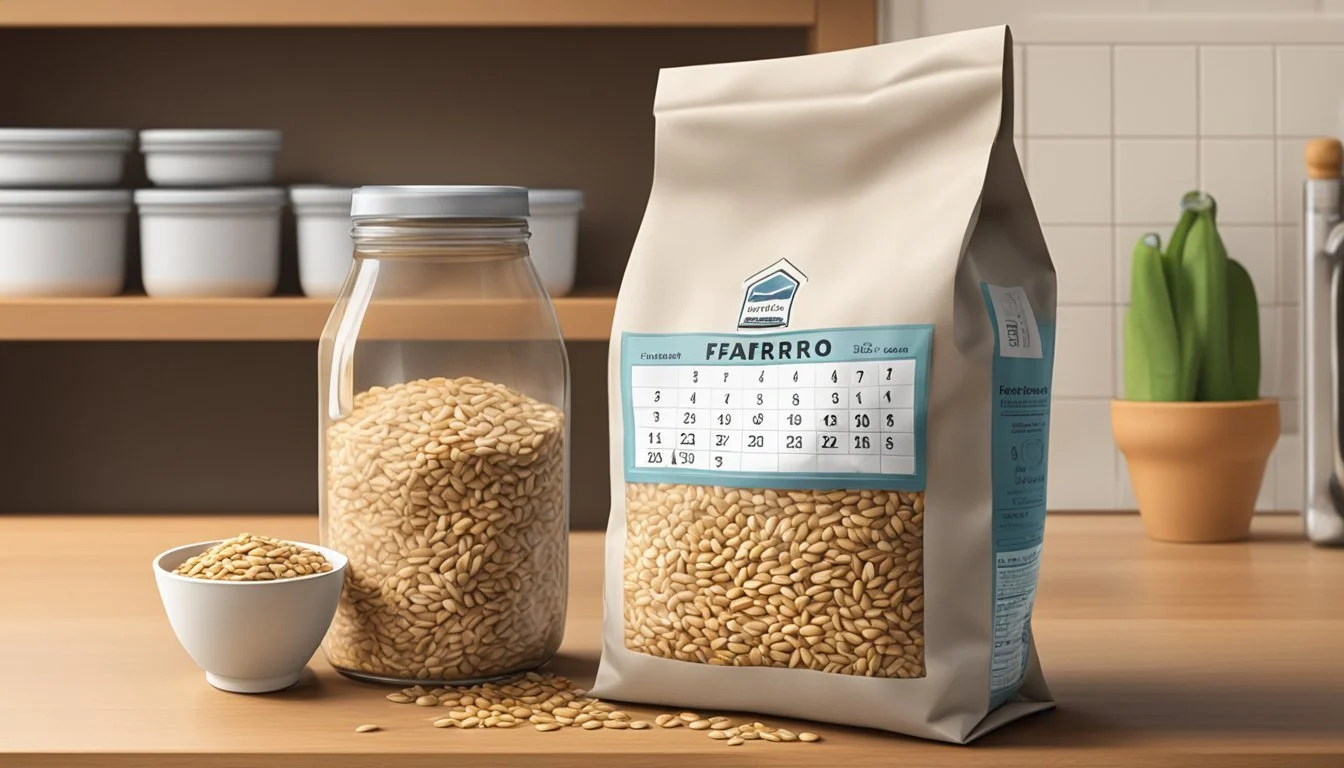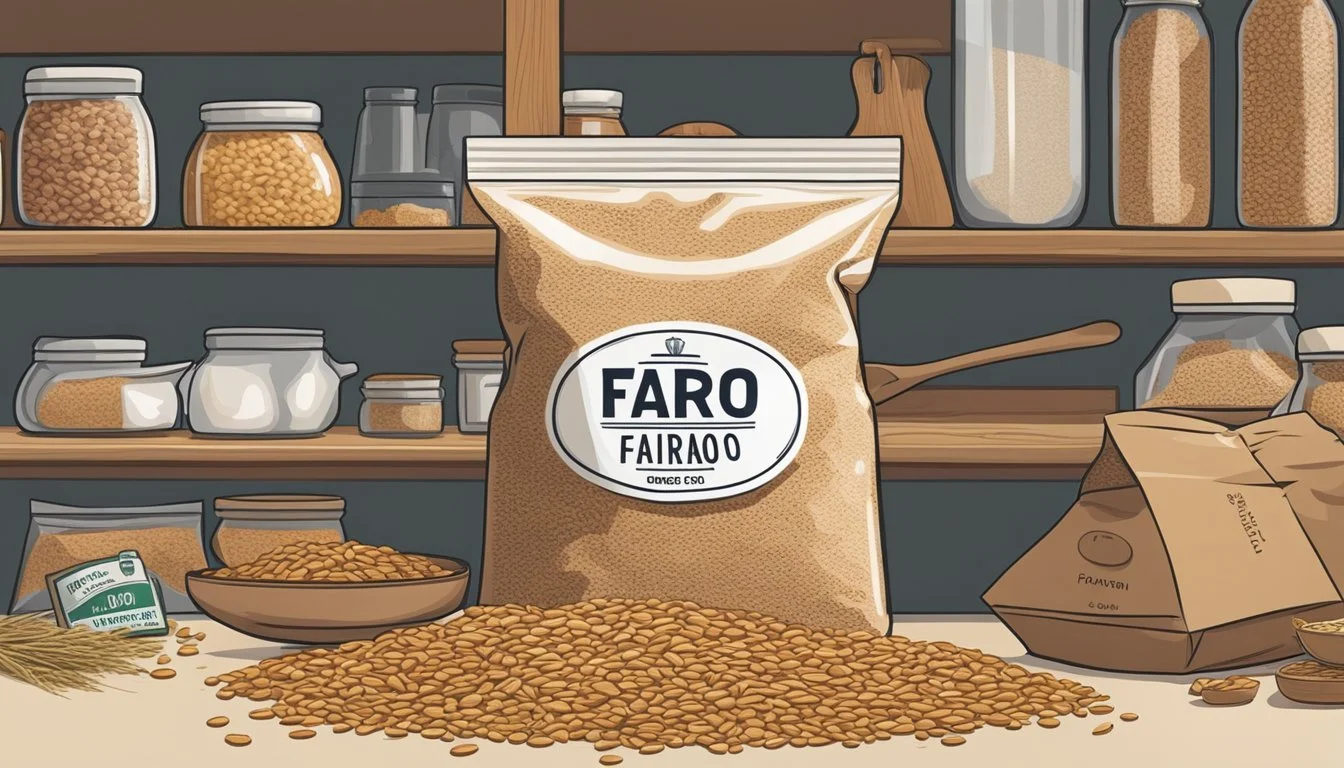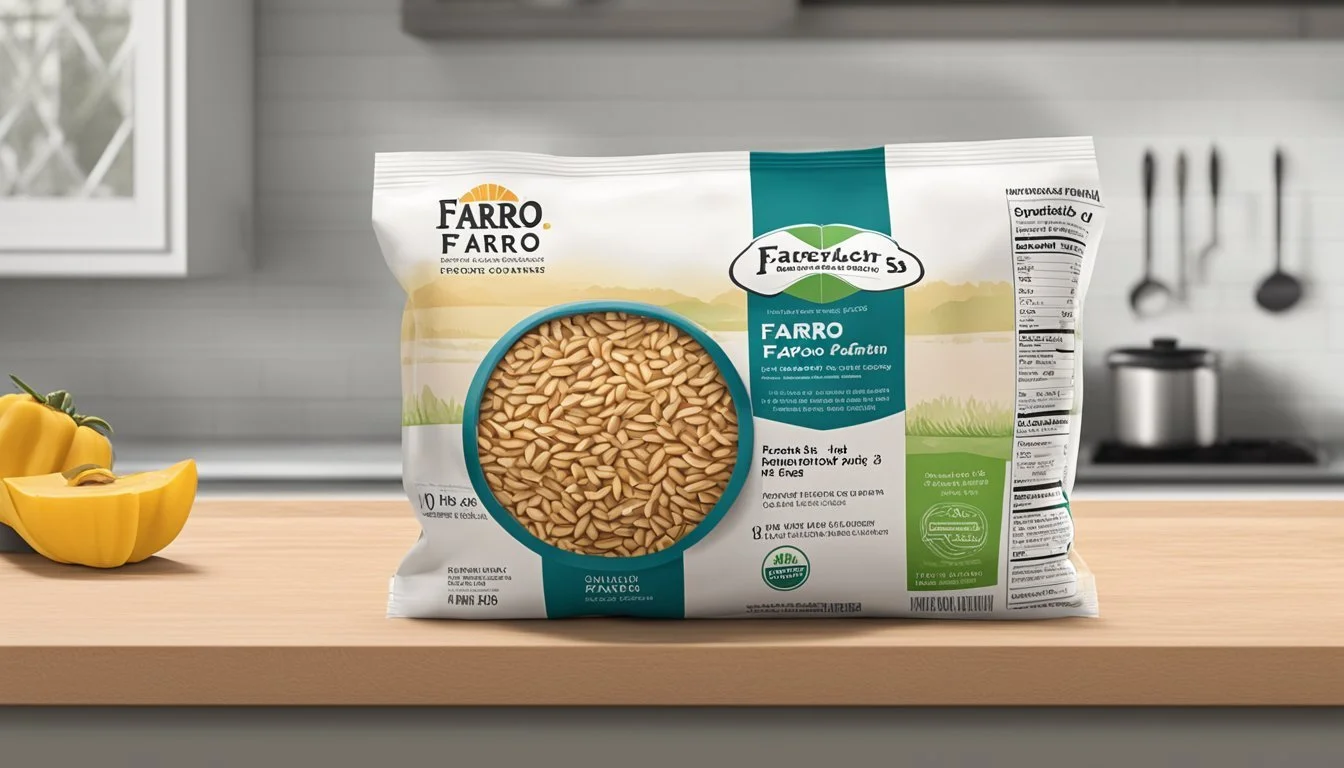Does Farro Go Bad?
Understanding Shelf Life and Storage Tips
Farro, an ancient grain known for its nutty flavor and chewy texture, has gained popularity for its health benefits, including being a good source of fiber, iron, protein, and essential minerals like magnesium and zinc. As interest in healthy eating habits grows, more people are incorporating farro into their diets. Yes, farro can go bad if not stored properly. Both uncooked and cooked farro have specific shelf lives that depend on how they are stored.
Uncooked farro, when kept in airtight containers in a cool, dry place, can last up to two years. Conversely, cooked farro should be consumed within three to four days if kept in the fridge or can be frozen for longer storage. Checking for any signs of spoilage, such as changes in color, odor, or texture, is crucial to ensure its safety.
Not only does farro offer a pleasant culinary experience, but it also provides a nutritional boost. Packed with vitamins and minerals, it can be a valuable addition to a balanced diet. Understanding how to store farro properly enables one to make the most of this wholesome grain, ensuring it remains a staple in the pantry for a longer time.
What Is Farro?
Farro is an ancient grain known for its impressive nutritional benefits and versatility in cooking. It has a nutty flavor and chewy texture, making it popular in various dishes.
Nutritional Profile
Farro stands out for its rich nutritional content. As a whole grain, it includes the germ, bran, and endosperm, offering more nutrients than refined grains. It is an excellent source of protein and dietary fiber.
A one-fourth cup serving of farro typically provides:
Protein: Approximately 6 grams
Fiber: Around 5 grams
Magnesium: About 10% of the daily value
Zinc: Roughly 15% of the daily value
B Vitamins: Includes B3 (Niacin) and B6
These nutrients contribute to overall health, support muscle function, and improve digestive health.
Varieties and Their Distinctions
Farro is produced from three different wheat species: emmer, spelt, and einkorn. Each of these has its unique features:
Emmer (Triticum dicoccum): The most common variety found in stores. It's known for its slightly chewy texture and rich, nutty flavor.
Spelt (Triticum spelta): Offers a mild taste and can be used as a substitute in recipes calling for wheat berries.
Einkorn (Triticum monococcum): The oldest and least common variety. It has a delicate flavor and is often considered the most nutritious among the three.
Farro's versatility makes it suitable for soups, salads, and even breakfast dishes. Knowing the differences in varieties can help in choosing the right one for specific recipes.
Proper Storage Solutions
To ensure farro remains fresh and safe for consumption, it is important to store it correctly, whether it is uncooked, cooked, or frozen.
Tips for Storing Uncooked Farro
Store uncooked farro in a cool, dry place. An airtight container is essential to prevent moisture and pests.
Pantry:
Keep farro at room temperature.
Ensure the pantry is a dry environment.
Ideally, store it in a cupboard away from the stove or any moisture sources.
Shelf Life:
Uncooked, sealed farro can last up to 2 years if stored properly.
Regularly check for signs of spoilage, such as an off smell or discoloration.
Storing Cooked Farro
Cooked farro should be kept in an airtight container in the refrigerator.
Refrigeration:
Place cooked farro in an airtight container.
The refrigerator should be kept cool and at a consistent temperature.
Store for up to 5 to 7 days.
Tips:
Prevent condensation by allowing farro to cool before sealing and refrigerating.
Check for any sour smells or changes in texture as indicators of spoilage.
Freezing Farro for Extended Freshness
For long-term storage, freezing is the best option.
Freezing Process:
Use airtight containers or freezer bags for storing farro.
Label containers with the date of freezing to keep track.
It is crucial to expel as much air as possible to prevent freezer burn.
Duration:
Cooked farro can be frozen for up to 3 months.
Reheat by thawing in the fridge overnight or using a microwave at a low setting.
Tips:
Avoid refreezing farro once it has been thawed.
Portion farro before freezing for convenient usage.
Proper storage not only extends the shelf life of farro but also keeps it safe and nutritious. Keeping these storage tips in mind will ensure that your farro remains fresh and ready to use.
Shelf Life of Farro
Farro can remain good for different lengths of time depending on whether it is cooked or uncooked and how it is stored. Key factors including packaging, storage conditions, and expiration dates play significant roles in determining its shelf life and quality.
Factors Affecting Shelf Life
Storage Conditions: Proper storage is essential for maintaining farro's freshness. Uncooked farro should be kept in airtight containers in a cool, dry place away from sunlight and moisture. Pantries or refrigerators are ideal locations. Cooked farro should be cooled and then stored in airtight containers in the refrigerator.
Packaging: The packaging of farro influences its shelf life. Farro in sealed, airtight packaging can last longer compared to farro stored in non-sealed packaging. Vacuum-sealed packages provide the best protection against moisture and air.
Temperature: Temperature control is important. Farro should be stored at a consistent, cool temperature. Fluctuating temperatures or exposure to heat can shorten its shelf life and degrade quality.
Examining Expiration and Sell-By Dates
Uncooked Farro: When stored properly, uncooked farro can last up to two years. Farro typically has a printed expiration or sell-by date, but it may remain safe for consumption past this date if no spoilage signs are present.
Cooked Farro: Cooked farro has a shorter shelf life. It can last 5 to 7 days in the refrigerator if stored in an airtight container. If frozen, cooked farro can be preserved for several months.
Quality Check: Check for signs of spoilage like a rancid smell, unusual appearance, or strange taste, especially when approaching or past the expiration date. If any are present, the farro should be discarded to ensure safety.
Recognizing Spoilage
Understanding the signs of spoiled farro is essential for maintaining food safety. Key indicators include changes in visible appearance, texture, odor, and taste.
Visible Signs and Texture Changes
Spoiled farro often exhibits visible signs of spoilage. Mold growth is a primary indicator and can appear as green, white, or black spots. Discoloration is also a concern, with fresh farro typically showing a uniform golden-brown hue. An unusual appearance, such as dark spots or patches, suggests spoilage.
Texture changes are another red flag. Fresh farro maintains a firm, dry texture. If it feels soft, damp, or shows signs of clumping, it's likely spoiled. These changes indicate the absorption of moisture, which encourages microbial growth.
Odor and Taste Deterioration
Odor is a crucial factor in detecting spoiled farro. Fresh farro has a mild, nutty scent. If it emits a sour or rancid odor, it's best to discard it. This unpleasant smell results from bacteria or mold activity, which produce foul-smelling compounds.
Taste is equally important. While it's not recommended to eat potentially spoiled farro, a subtle taste test can confirm suspicions. Spoiled farro often tastes off or rancid, lacking the usual nutty flavor. This change in taste indicates the degradation of oils and other components due to spoilage.
Ensuring proper storage conditions can prevent these spoilage signs, but recognizing them when they appear is vital for food safety.
Food Safety Considerations
Ensuring that farro is handled and stored properly is critical to avoid foodborne illnesses and contamination. Knowing the risks involved and steps to prevent spoilage can help maintain food safety.
Risks of Consuming Spoiled Farro
Consuming spoiled farro can lead to food poisoning. If farro shows signs of spoilage, such as a rancid smell, discoloration, or the presence of pests, it should be discarded immediately.
Bacteria such as Salmonella or E. coli may develop on spoiled grains. These can cause severe foodborne illnesses, leading to symptoms like vomiting, diarrhea, and stomach cramps.
Farro that has exceeded its expiration date or been improperly stored can also harbor mold. Mold growth can produce mycotoxins, which are harmful and potentially carcinogenic. Routine inspection of stored farro for any abnormalities is recommended.
Preventing Contamination and Illness
To prevent contamination, farro should be kept in airtight containers to protect it from moisture, pests, and other contaminants.
Storage areas should be cool and dry since warm or humid conditions promote bacterial growth and spoilage. For long-term storage, refrigerating or freezing farro can extend its shelf life.
Cooked farro should be refrigerated within two hours of preparation to minimize bacterial growth. It is best consumed within 3-4 days or frozen for extended use, ensuring it is cooled properly before storage.
Good hygiene practices such as washing hands, using clean utensils, and maintaining a clean kitchen environment also play a significant role in preventing contamination and ensuring food safety.
Nutritional Benefits and Culinary Uses
Farro is packed with essential nutrients and is versatile in the kitchen, making it a favorite ingredient in many recipes. Rich in fiber, protein, vitamins, and minerals, this ancient grain offers numerous health benefits and can be used in various dishes.
Culinary Applications
Farro's nutty flavor and delightful chewy texture make it a suitable addition to many meals. Cooks often use it in salads, as the grains hold up well and provide a satisfying bite. In soups, it adds a hearty and nutritious element. Because of its firm structure, it works wonderfully in risotto, absorbing flavors while maintaining its integrity.
In baking, farro flour can be used to enhance the nutritional profile of bread and muffins, adding fiber and protein. It also serves as an excellent side dish, often replacing more refined grains like white rice. Italian cuisine frequently incorporates farro into its dishes, emphasizing its potential to elevate simple recipes with its rich and earthy taste.
Substituting Farro in Recipes
When substituting farro in recipes, it’s important to recognize its unique properties. Unlike refined grains, farro provides more fiber and retains more of its nutritional value, offering health benefits like improved digestion and better blood sugar regulation. Its high magnesium and zinc content also contribute to its antioxidant properties.
In recipes calling for rice or other grains, farro can easily be swapped in with adjustments to cooking time. Since whole farro takes longer to cook, it is crucial to allow adequate time for it to achieve a tender consistency. For a quicker option, pearled farro reduces cooking time while still offering substantial nutrients.
Using farro in place of less nutritious grains not only boosts the nutritional value of dishes but also adds a layer of depth with its nutty flavor and satisfying texture. Whether incorporated into fresh salads, hearty soups, or elegant risottos, farro stands out as a quality ingredient in diverse culinary applications.
Understanding Food Labels
Properly interpreting food labels ensures that the farro you consume is both fresh and suitable for your dietary needs. This includes understanding date labels and recognizing gluten content to meet individual health requirements.
Decoding Date Labels
Food labels often include various dates such as "sell by," "use by," and "best before." These labels help determine the freshness and safety of the product.
Sell By: This date indicates how long a store should display the product for sale. It does not necessarily mean the food is bad after this date.
Use By: This is the last date recommended for the use of the product while at peak quality. After this date, the product may start to lose its quality and flavor.
Best Before: This date suggests when the product is expected to be at its best flavor and quality. Unlike "use by" dates, foods with a best-before date can still be safe to eat, though they might not taste as good.
Uncooked, sealed farro can last up to 2 years in proper storage conditions. Always inspect farro for signs of spoilage, such as changes in color, texture, or smell, regardless of the labeled dates.
Gluten Content and Dietary Considerations
Farro contains gluten, which is important for those with celiac disease or gluten sensitivities.
Celiac Disease: For individuals with celiac disease, consuming gluten can cause severe digestive issues and damage to the small intestine. Farro is not suitable for these individuals.
Gluten Sensitivities: Those with non-celiac gluten sensitivity may also experience discomfort, such as bloating or headaches, after consuming gluten. It's crucial for these individuals to avoid farro and other gluten-containing grains.
Gluten-Free Alternatives: For those who need or choose to follow a gluten-free diet, there are many alternatives to farro. These include quinoa, brown rice, and buckwheat, which provide similar nutritional benefits without the gluten.
Carefully reading food labels and understanding the gluten content can help manage health conditions effectively and ensure dietary needs are met.
Cooking and Preparation Tips
Farro is a versatile grain that can be enjoyed in various dishes with its chewy texture and nutty taste. Understanding how to prepare, cook, freeze, and reheat farro ensures you get the most out of this nutritious whole grain.
Preparing Farro for Cooking
Before cooking farro, it should be rinsed under cold water to remove any residual dust or debris. For added flavor, toasting it in a dry skillet or baking it on a sheet tray at 350°F for 10 minutes can enhance its nuttiness. Some cooks prefer soaking farro overnight in water to reduce cooking time and improve texture, but this step is optional based on personal preference.
Cooking Time and Techniques
Cooking farro depends on its type: pearled, semi-pearled, or whole. Pearled farro typically cooks in about 15-20 minutes, semi-pearled in 25-30 minutes, and whole farro in 35-40 minutes. The farro should be added to boiling water (with a general ratio of 1 cup farro to 3 cups water). Maintaining a gentle simmer, cook until the grains are tender but still chewy, then drain any excess water.
Freezing Cooked Farro
Cooked farro can be frozen for later use, making it a convenient option for meal prep. After cooking, allow the farro to cool completely before spreading it in a single layer on a baking sheet to freeze for an hour. Once frozen, transfer the farro to airtight containers or freezer bags. Properly stored, it can retain its quality for up to three months without losing its chewy texture or flavor.
Reheating Farro
Reheating farro should preserve its texture and taste. If reheating from frozen, it's best to thaw it in the refrigerator overnight. To reheat, simply add a small amount of water or olive oil to prevent it from drying out and simmer gently on the stovetop or use a microwave-safe dish. For a different taste, farro can also be added directly to soups, stews, or mixed with fresh herbs and vegetables for a quick side dish.
By following these tips, you can enjoy farro's unique texture and flavor, whether you're preparing a fresh batch or enjoying leftovers.
Purchasing and Varieties
Farro, known for its nutty flavor and chewy texture, can be found in various forms. Ensuring the quality and freshness of farro is crucial for enjoying its full benefits.
Where to Purchase Farro
Farro can be purchased at health food stores, supermarkets, and online retailers. Whole grain farro is the most nutritious, retaining the bran and germ. Look for farro in the grains or bulk section. Health food stores often carry different varieties such as emmer wheat, spelt, and einkorn.
When buying in bulk, inspect the grains for signs of moisture, mold, or insects. Choose stores with high turnover rates for their bulk items to avoid purchasing stale farro. Online retailers usually provide detailed descriptions and reviews, which can help in selecting high-quality grains.
Selecting High-Quality Grains
To select high-quality farro, check for a freshness label. Farro should be free from any unpleasant odor, a sign of spoilage. High-quality farro grains should be dry and have a consistent color. Any discoloration might indicate poor quality or age.
There are different varieties to explore. Emmer wheat is the most common type found in stores. Spelt and einkorn also offer unique nutritional profiles and flavors. Compared to rice or barley, farro is rich in fiber and protein. Always consider whole grain options for the maximum health benefits.










